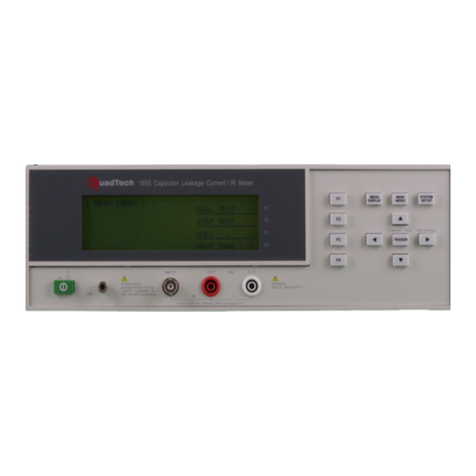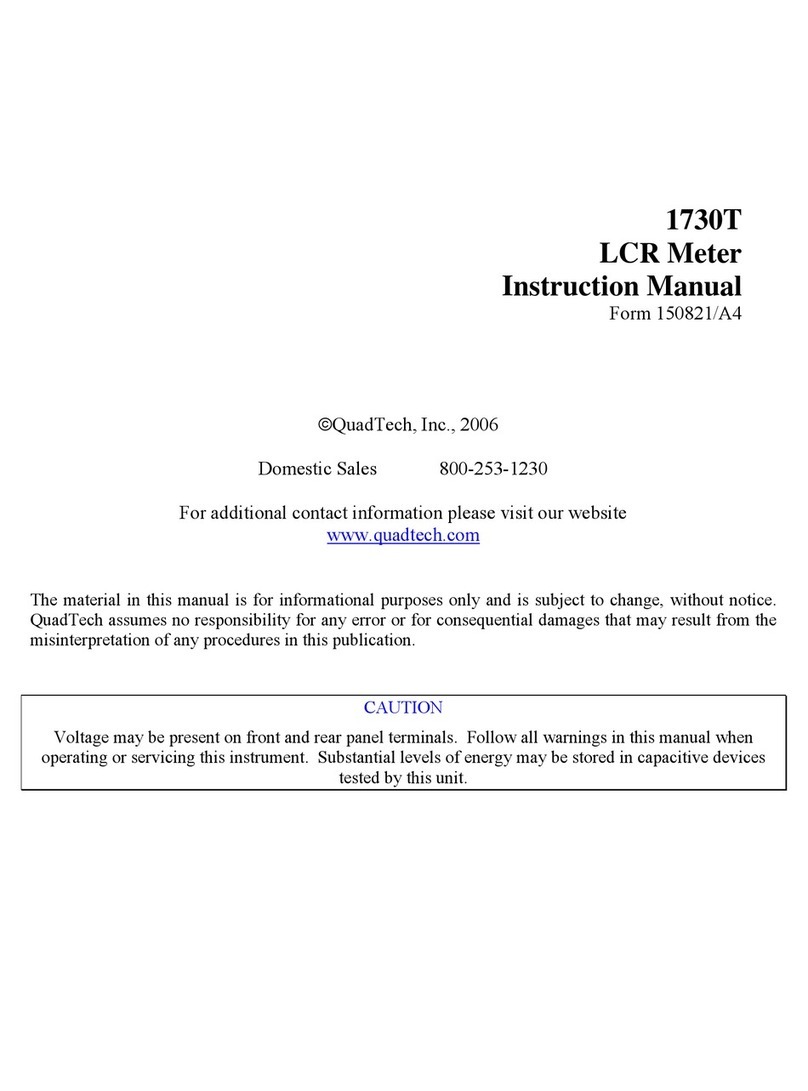
1.1 PURPOSE1-1
1.2GENERAL DESCRIPTION 1-1
1.3 CONTROLS, INDICATORS, ANDCONNECTORS1-1
1.4 ACCESSORIES1-1
1.1 PURPOSE.in keepingwith thelong-lifecircuitryinside. Glass-epoxy
The1657 Digibridgedigital impedancemeterembodiescircuit boards interconnect and supporthigh-quality com
useofa microprocessorand otherLSIcircuitryto ponents to assureyearsofdependability.
provide excellent performance at lowcost. Adaptability to anycommon ac powerline is assured by
Afewclearlylabeledpushbuttonsand the versatiletheremovable power cord and the convenient line-voltage
built-intest fixturemake this instrument a modelforcon- switch. Safety is enhancedby the fused,isolatingpower
venience. Measurement results areclearly shown with dec- transformerand the3-wirepowerconnection. A compre
imal points and units,whichareautomaticallypresented to hensivefunctionaldescriptionis giveninTheory, Section 4
assurecorrectness. Display resolution is5 digits forR, C,Electrical and physical characteristics arelistedin Specifi
and L (4forDorQ)andthebasic accuracy is 0.2%.cations at thefront ofthis manual,dimensions in Installa
Long-termaccuracy and reliability areassured by the tion,Section 2. Controlsaredescribed below,and their use
measurementsystem.Itmakes these accurate analog inOperation, Section3.
measurements overmany decadesofimpedance without a
singlecalibrationor "trimming" adjustment(not evenin 1.3CONTROLS,INDICATORS,AND CONNECTORS.
original manufacture)..
Thebuilt-in test fixture,with a pair ofplug-in adaptors,Figure:-1 showsthe front panelconrolsandindicators.
receivesany common component part(axial-lead orradial-Table1-1identifiesthemwith descriptions andfunctions.
lead) so easily thatinsertion of the DUT isaone-hand Similarily, Figure 1-2 shows the rear panel and Table 1-2 identifies
t
.I
.I
ent
es an
escr
es t
e rearpane
contro
s an
connec
operation.True4-terminal connectionsare made automat
.ically. Extender cables and other accessories are available and describes the rear panel controls and connectors.
formeasurements at adistance fromthe Digibridge.
1.4 ACCESSORIES.
Gen Rad makes several accessories that enhance the use
1.2 GENERAL DESCRIPTION. fulness of this instrument. Two extender cables facilitate
Convenience is enhanced by the arrangement of test making connections to those devices and impedance stan
fixture on the front ledge, with push buttons farther for- dards that do not readily fit the built-in test fixture. A
wardanddisplaybehind.The displaypanel isinclined andremote testfixture (used withBNC adaptorand cable
recessed to enhance visbility of digital readouts and mode assembly) provides convenience and relatively easy main
indicators. Theseindicatorsserve toinformand guidethetenance,andsaves wearon the built-intestfixture. All of
operatoras he operatesthesimplecontrols.these test-fixtureaccessoriesprovide fortrue 4-terminal
The instrument stands on a table or bench top. The connections (and guard) to the device being measured,
sturdy metal cabinet is attractively and durably finished, without appreciable reduction in measurement accuracy.
Other useful accessories are offered, such as standards for
checking the performance of the Digibridge. Refer to
Table 1 -3 and Section 5.
INTRODUCTION 1-1






























